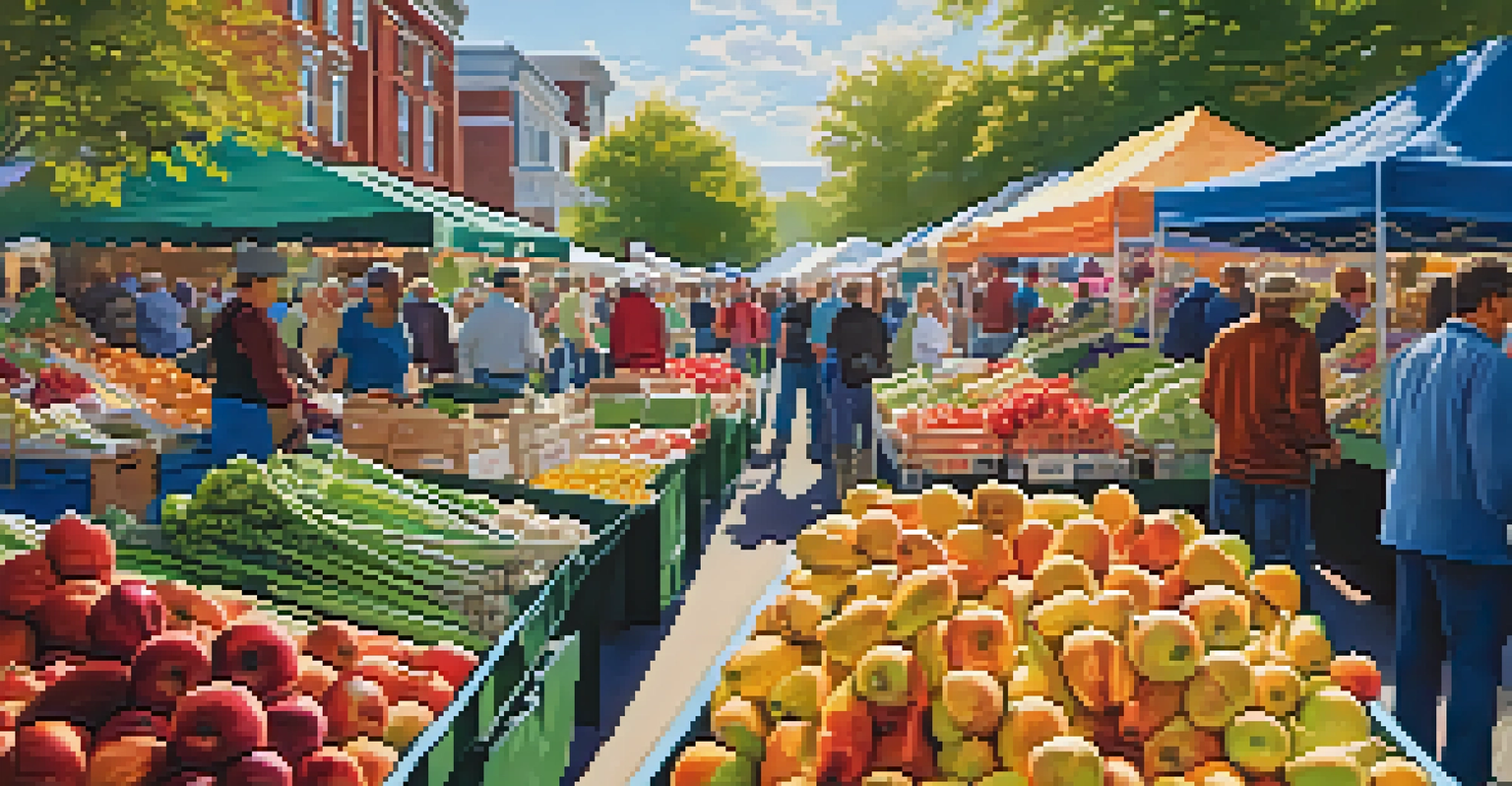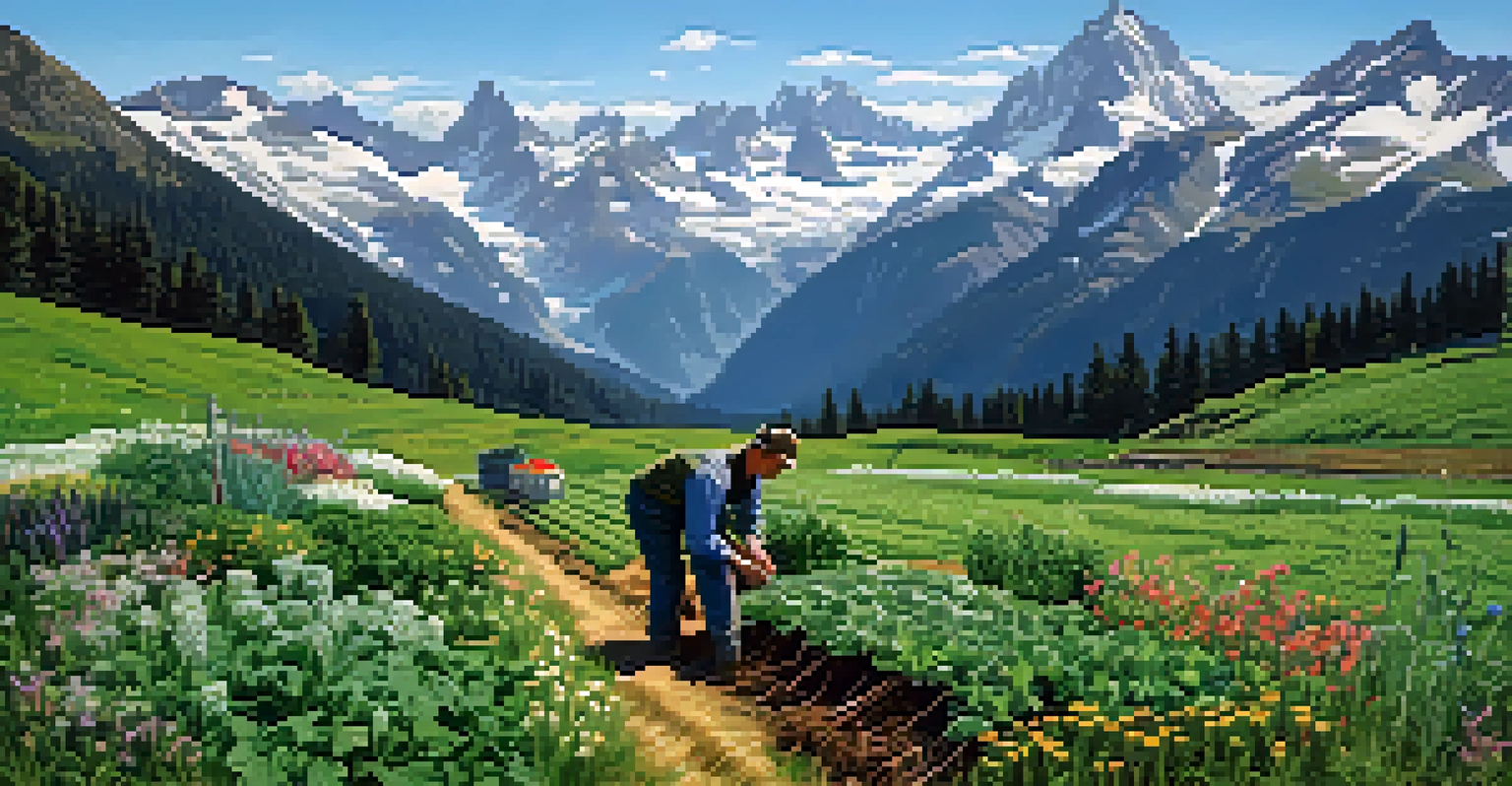Climate Zones of Washington: A Guide for Local Farmers

Overview of Washington's Diverse Climate Zones
Washington State is known for its rich agricultural landscape, but its climate is not one-size-fits-all. It features a variety of climate zones, from the coastal regions to the high deserts. Understanding these zones is essential for local farmers, as they directly affect crop selection and farming practices.
Agriculture is our wisest pursuit, because it will in the end contribute most to real wealth, good morals, and happiness.
The state can be broadly divided into four main climate zones: coastal, maritime, continental, and alpine. Each of these areas has unique temperature ranges, precipitation levels, and growing seasons. For example, while the coastal areas enjoy milder winters and cooler summers, the eastern regions can experience significant temperature swings.
By familiarizing themselves with these climate zones, farmers can make informed decisions about which crops will thrive in their specific location. This knowledge can ultimately lead to more successful harvests and sustainable farming practices.
The Coastal Climate Zone: Characteristics and Crops
The coastal climate zone of Washington is characterized by its mild, wet winters and cool, dry summers. This zone benefits from the Pacific Ocean's moderating influence, creating ideal conditions for a variety of crops. Notably, tomatoes, berries, and leafy greens flourish in this environment.

Farmers in this zone often face challenges such as excess moisture during the growing season, which can lead to fungal diseases. To combat these issues, implementing proper irrigation techniques and crop rotation can be beneficial. Additionally, using raised beds can help improve drainage and air circulation.
Understanding Climate Zones is Key
Familiarity with Washington's diverse climate zones helps farmers select suitable crops and optimize farming practices for successful harvests.
Understanding the specific microclimates within the coastal zone can further enhance crop success. For example, areas sheltered by hills may experience slightly warmer temperatures, allowing for an extended growing season.
Maritime Climate Zone: A Unique Growing Environment
Washington's maritime climate zone, found in areas like the Puget Sound, is marked by its moderate temperatures and abundant rainfall. This zone is particularly favorable for growing a wide variety of fruits and vegetables, including apples, pears, and various root crops. The consistent moisture helps keep crops hydrated and healthy.
In the midst of movement and chaos, keep stillness inside of you.
Farmers in this zone need to be mindful of the potential for pests and diseases that thrive in humid conditions. Integrated pest management (IPM) strategies can help control these threats while minimizing chemical use. Additionally, selecting disease-resistant crop varieties can be a wise move.
The maritime zone also allows for a longer growing season compared to more inland areas. This means farmers can take advantage of multiple harvests and diversify their crops throughout the year, enhancing both productivity and profitability.
Continental Climate Zone: Understanding Temperature Variations
The continental climate zone in Washington, particularly in the eastern part of the state, experiences more extreme temperature variations than its coastal counterpart. Winters can be quite cold, while summers can be hot and dry. This climate is well-suited for crops like wheat, barley, and other grains that thrive in drier conditions.
Farmers in this zone often utilize irrigation systems to supplement natural rainfall, especially during the hot summer months. Understanding the timing of planting and harvesting is crucial, as the growing season can be shorter than in milder zones.
Adapting to Climate Change is Essential
Farmers must adapt to climate change by diversifying crops and employing sustainable practices to ensure resilience in their agricultural operations.
Moreover, crop rotation and soil management practices can help maintain soil health and fertility in this region. Farmers should also be aware of the potential for frost in early spring and late fall, which can impact their planting schedules.
Alpine Climate Zone: Challenges and Opportunities
The alpine climate zone, found in Washington's mountainous regions, presents unique challenges for farmers. Here, temperatures can drop significantly, and the growing season is short, making it essential to choose crops wisely. Hardy varieties such as certain root vegetables and cold-tolerant greens can perform well in these conditions.
Farmers in alpine areas often face challenges with soil quality and erosion due to the steep terrain. Implementing contour farming techniques and utilizing cover crops can help improve soil health and reduce erosion. Additionally, creating microclimates through strategic planting can protect crops from harsh weather.
Despite the challenges, the alpine climate offers opportunities for niche markets. Specialty crops, such as heirloom varieties and premium herbs, can thrive in these unique conditions, providing farmers with a chance to stand out in the marketplace.
Adapting to Climate Change in Washington
Climate change is impacting all climate zones in Washington, and farmers must adapt to these changes to ensure sustainability. Rising temperatures, shifting precipitation patterns, and increased frequency of extreme weather events can all affect crop yields and farming practices. Understanding these risks is the first step toward effective adaptation.
Farmers are encouraged to diversify their crops as a strategy to mitigate risk. By planting a wider variety of crops, they can reduce their vulnerability to market fluctuations and climate-related challenges. Additionally, investing in soil health and water conservation practices can enhance resilience against climate change.
Resources Support Local Farmers
Various resources, including workshops and networking opportunities, are available to help local farmers navigate the challenges of Washington's climate.
Engagement in community discussions and agricultural extension services can provide farmers with valuable resources and information. Learning from one another and sharing strategies can help create a more sustainable agricultural landscape in Washington.
Resources for Local Farmers in Washington
For local farmers looking to deepen their understanding of Washington's climate zones, various resources are available. The Washington State University Extension offers workshops, publications, and online courses tailored to local agricultural needs. These resources can help farmers stay informed about the latest research and best practices.
Networking with local agricultural organizations can also provide valuable insights and support. Farmers can benefit from sharing experiences and learning from one another, fostering a community of knowledge and collaboration. Participating in farmer markets and local co-ops can further strengthen these connections.

Additionally, online platforms and forums can serve as a space for farmers to discuss their challenges and successes. Engaging with fellow farmers through social media groups or local agricultural workshops can lead to innovative ideas and solutions tailored to Washington's diverse climate zones.
Conclusion: Embracing Washington's Climate Diversity
Washington's diverse climate zones offer both challenges and opportunities for local farmers. By understanding the unique characteristics of each zone, farmers can make informed decisions that lead to successful and sustainable agricultural practices. Knowledge of climate impacts helps optimize crop selection and farming methods.
As climate change continues to reshape agricultural landscapes, adaptability becomes crucial. Farmers are encouraged to stay engaged with resources and communities that provide support and information. Embracing innovation and sustainable practices will help ensure a resilient farming future.
Ultimately, the key to thriving in Washington's varied climate lies in understanding, collaboration, and a willingness to adapt. With the right knowledge and resources, local farmers can cultivate not only crops but also a sustainable future for their communities.